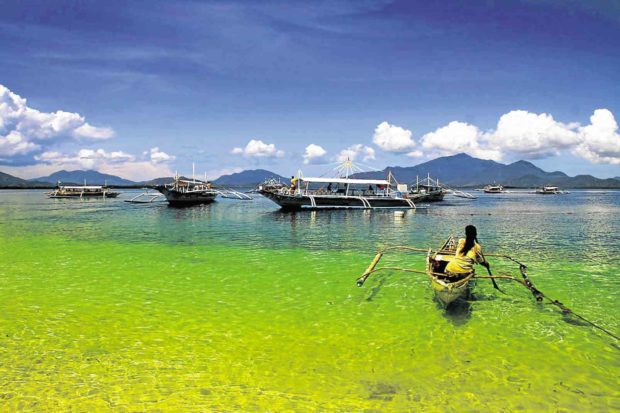MGB workers victims of mercury poison, too

Island-hopping in Honda Bay is one of the most popular activities for tourists in Puerto Princesa City in Palawan province. A recent government study, however, has found that Honda Bay wharf is one of the sources of mercury contamination in a local community. —INQUIRER PHOTO
PUERTO PRINCESA CITY—At least two staff members of the Mines and Geosciences Bureau (MGB), who have been monitoring the mercury levels around an abandoned mining site just outside the city center here, have also tested positive for mercury poisoning.
Engineer Alvin Requimin, the MGB official who coordinated the recent field studies of the MGB and the Department of Health that confirmed widespread cases of mercury poisoning among residents of two villages around the former mining site of the defunct Palawan Quicksilver Mines Inc. (PQMI), said he was undergoing medication to control the spread of the poisonous substance in his body.
“My mercury trace was found to be above the threshold. I apparently got this during the two years I have been coming back and forth to the project site. The doctors said its major cause was the ingestion of methylmercury from exposure,” Requimin told the Inquirer.
He said another MGB staff member working on the site also tested positive for mercury poisoning.
“We will be tested again in a month’s time but we hope the medication has helped reduce our blood mercury levels,” he added.
Requimin said the MGB and the Puerto Princesa City government had identified two possible relocation sites for 87 families living within the area called “pit lake” in Barangay Sta. Lourdes. This area was identified in the study as the main source of mercury poisoning in the community.
The pit lake, which used to be one of PQMI’s quarry sites, has become a 3-hectare water body that has attracted residents because of its livelihood benefits, particularly the growth of tilapia in the area.
The study confirmed that all fish growing and harvested in the pit lake had concentrated mercury in their meat and were dangerous to humans.
Earlier, the Department of Environment and Natural Resources formed a task force to contain the mercury contamination in Puerto Princesa and oversee relocation and treatment of affected residents.
Environment Secretary Roy Cimatu also vowed to initiate legal action against the now-defunct PQMI.
Cimatu promised to strengthen research on mercury contamination under the Ecosystems Research and Development Board.
He assured that the government was on top of the situation, saying tourism in Puerto Princesa City should not be affected by the recent government findings.
Consumption of fish harvested from contaminated water bodies was blamed for mercury poisoning cases. Traces of mercury were also found in fish and shellfish around the wharf area in Sta. Lourdes.
Requimin said the MGB was coordinating with the city government on plans to relocate the wharf in Sta. Lourdes, which was also found to be a major source of contamination.
The wharf had been formed from mercury ore dumped into the coastal bay by PQMI during its operations that stopped in the mid 1970s.
More than 300 families live around the Sta. Lourdes wharf, which serves as the jump-off point for tourists taking island-hopping trips around Honda Bay. This attraction is the second biggest tourist destination in Puerto Princesa, next to the Underground River.














